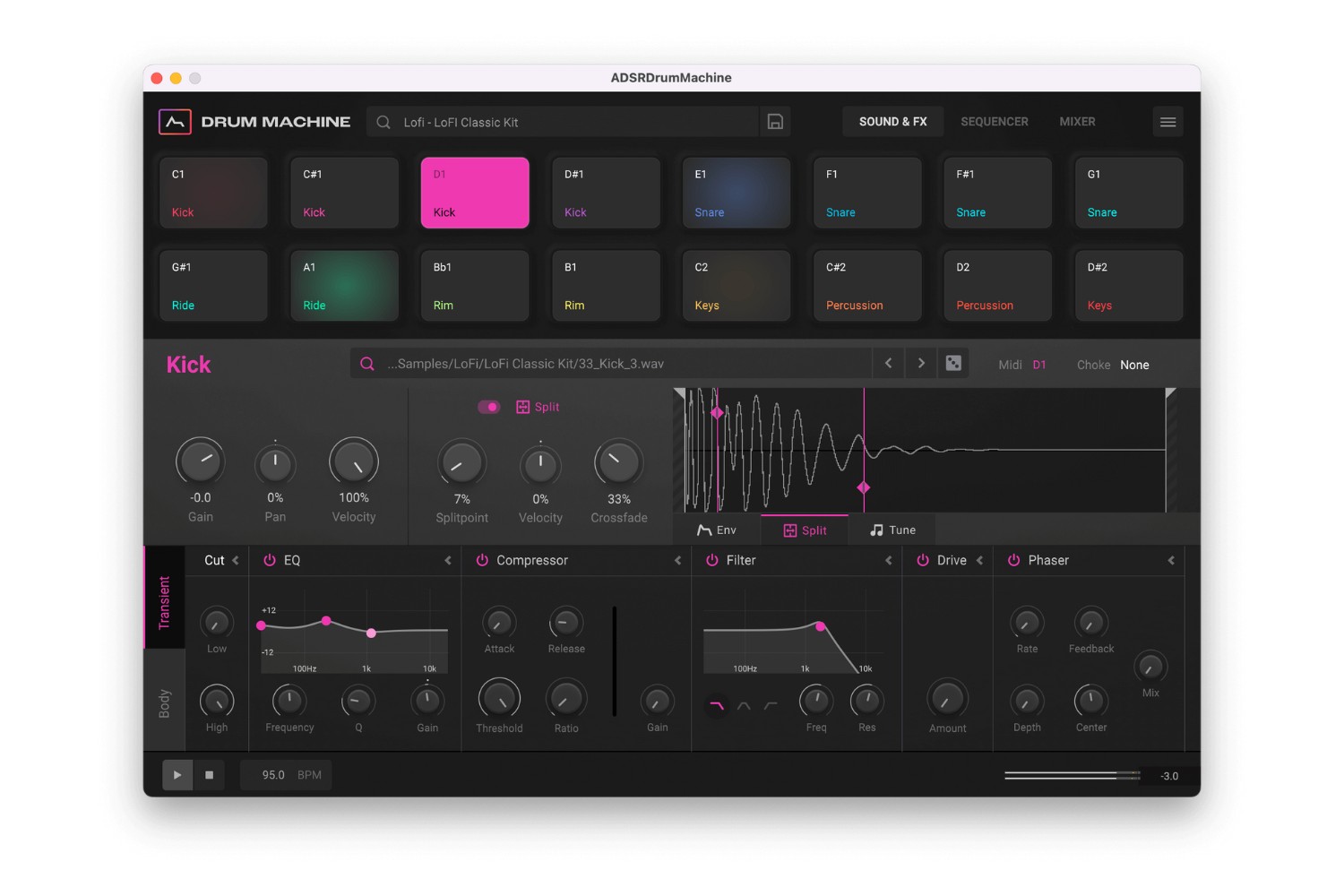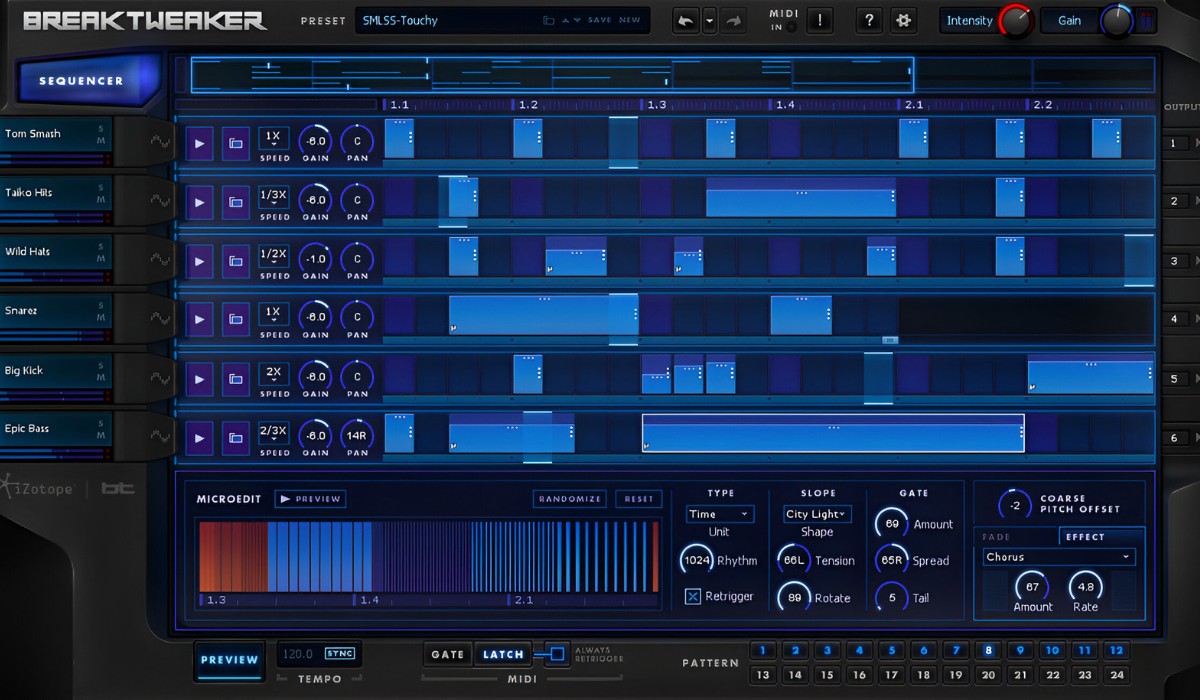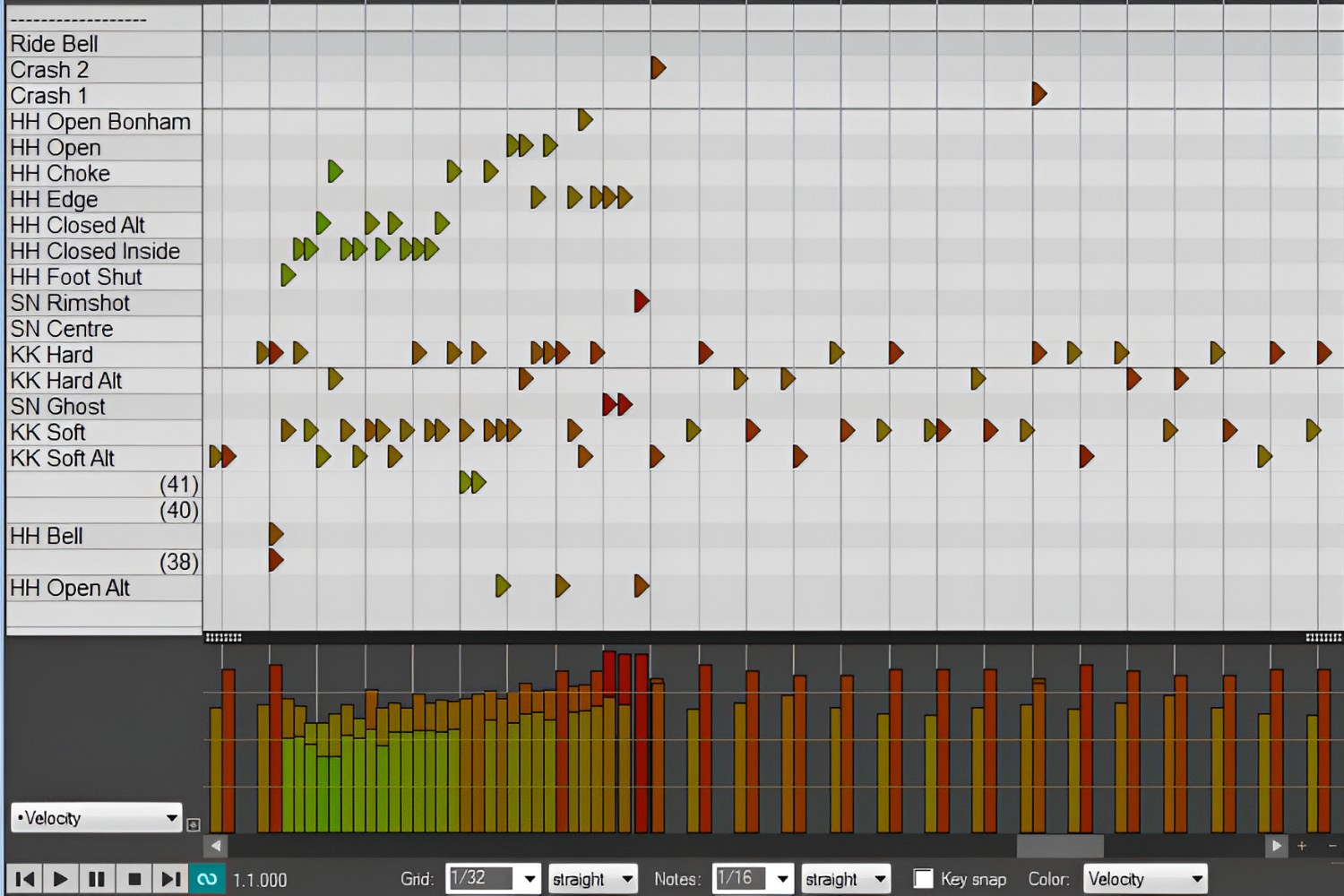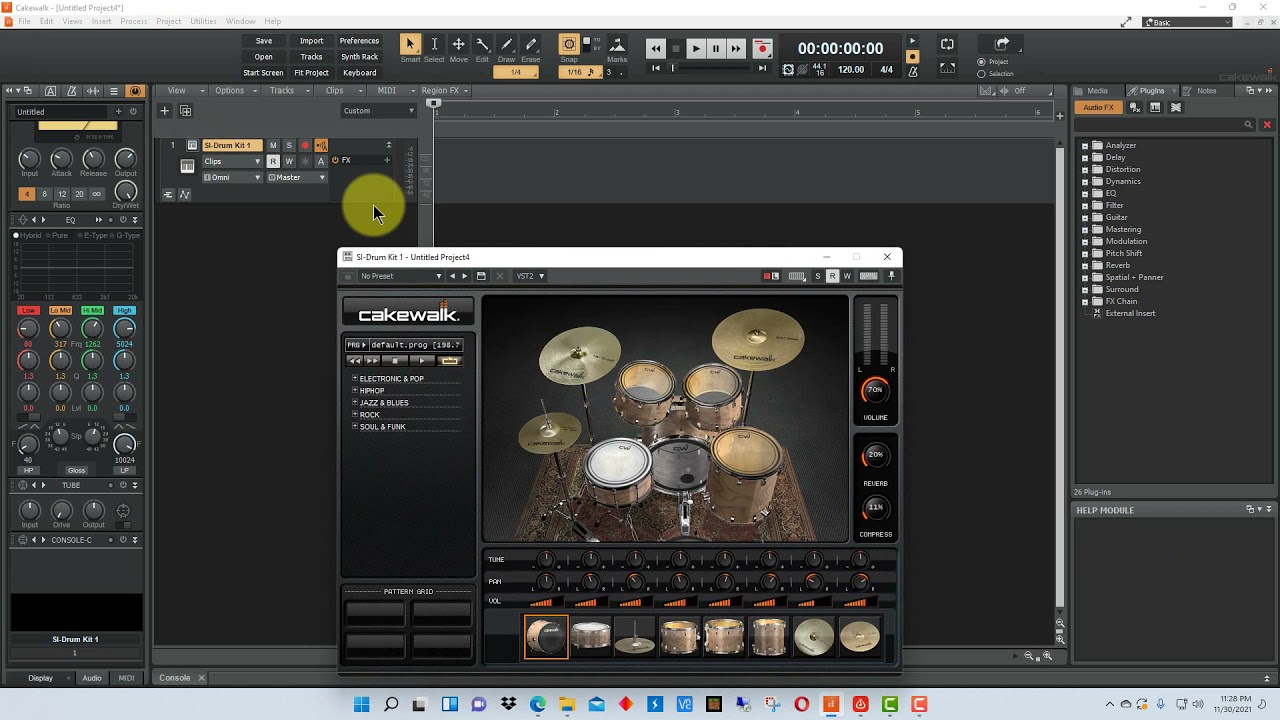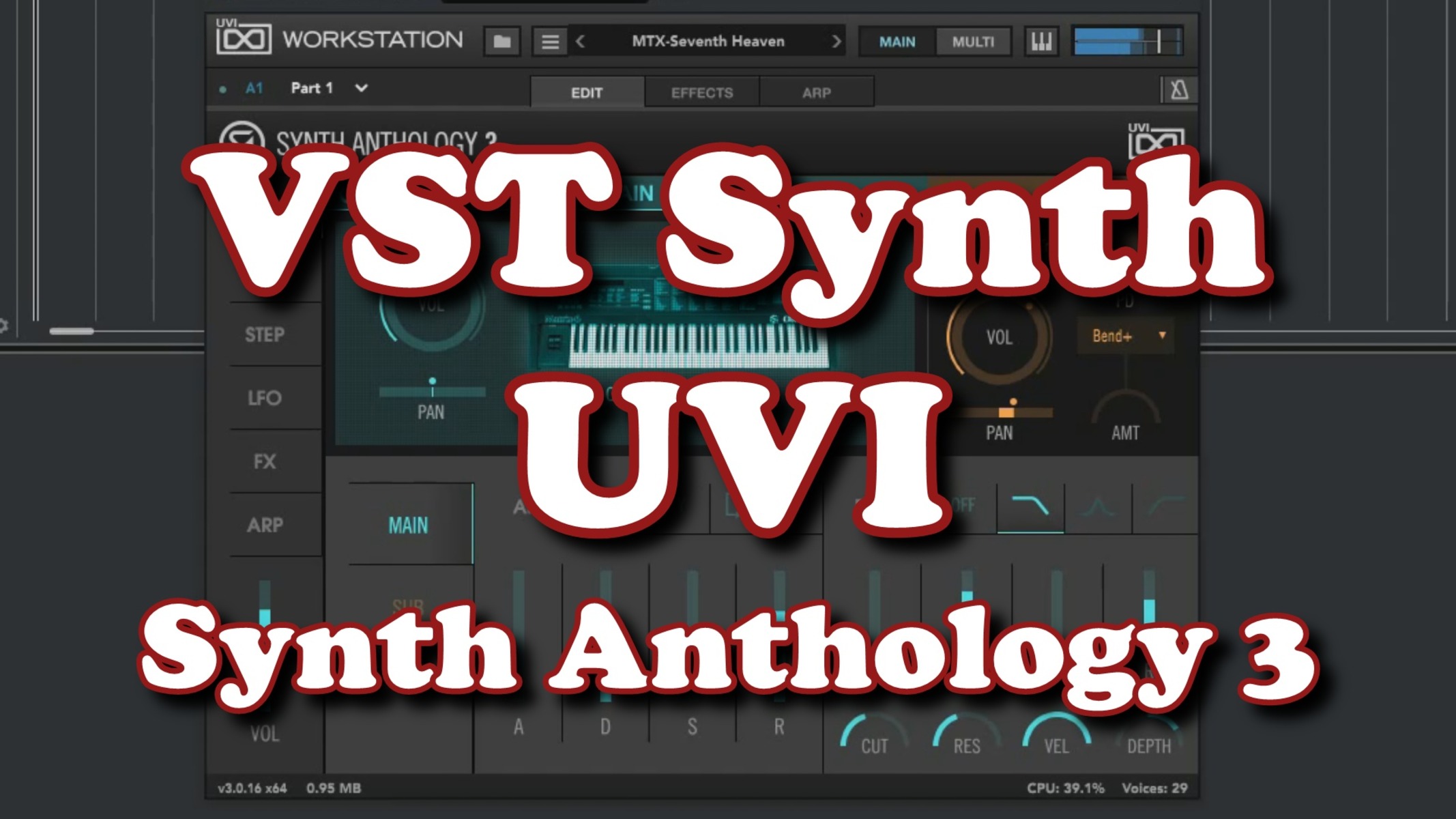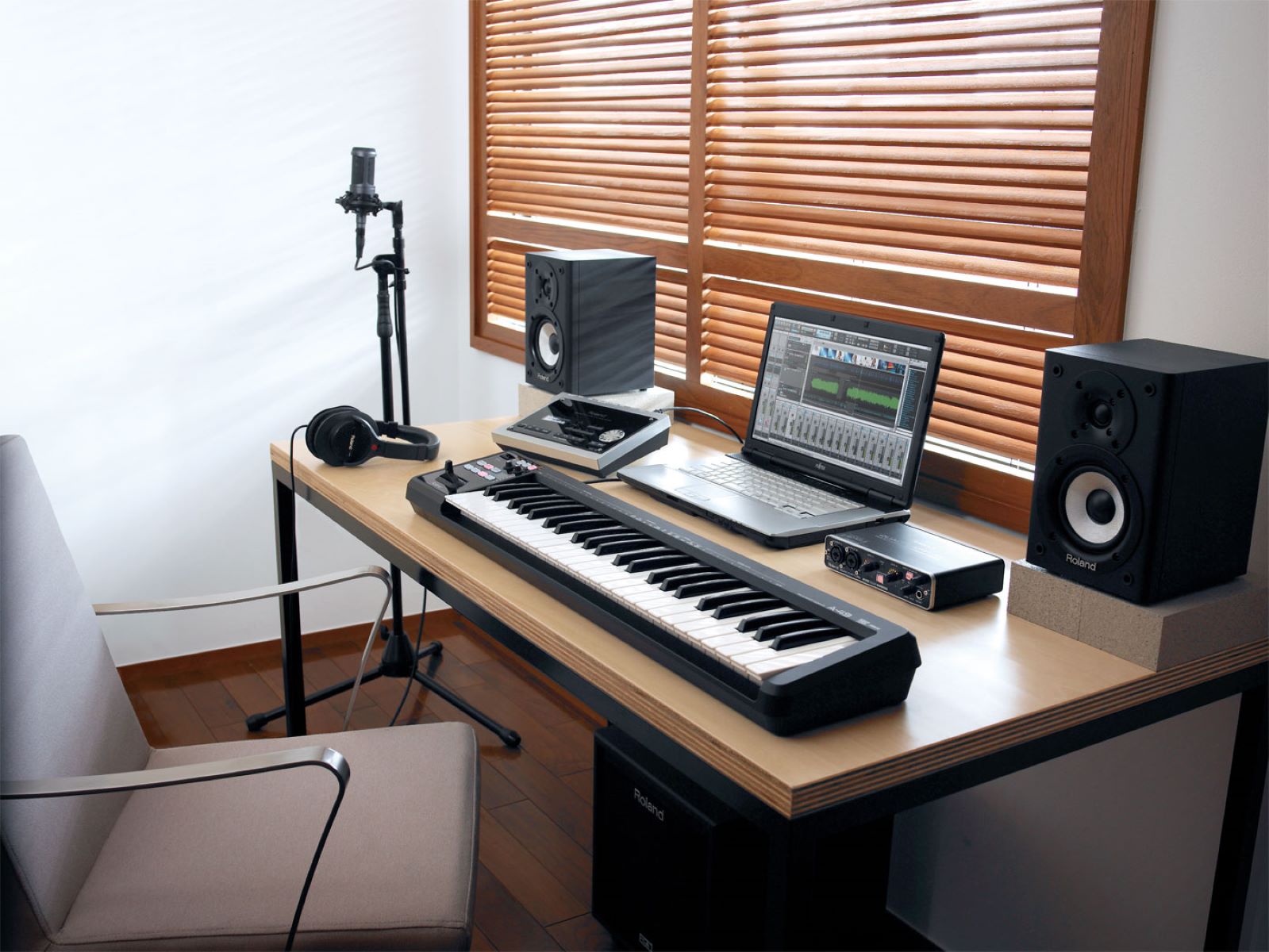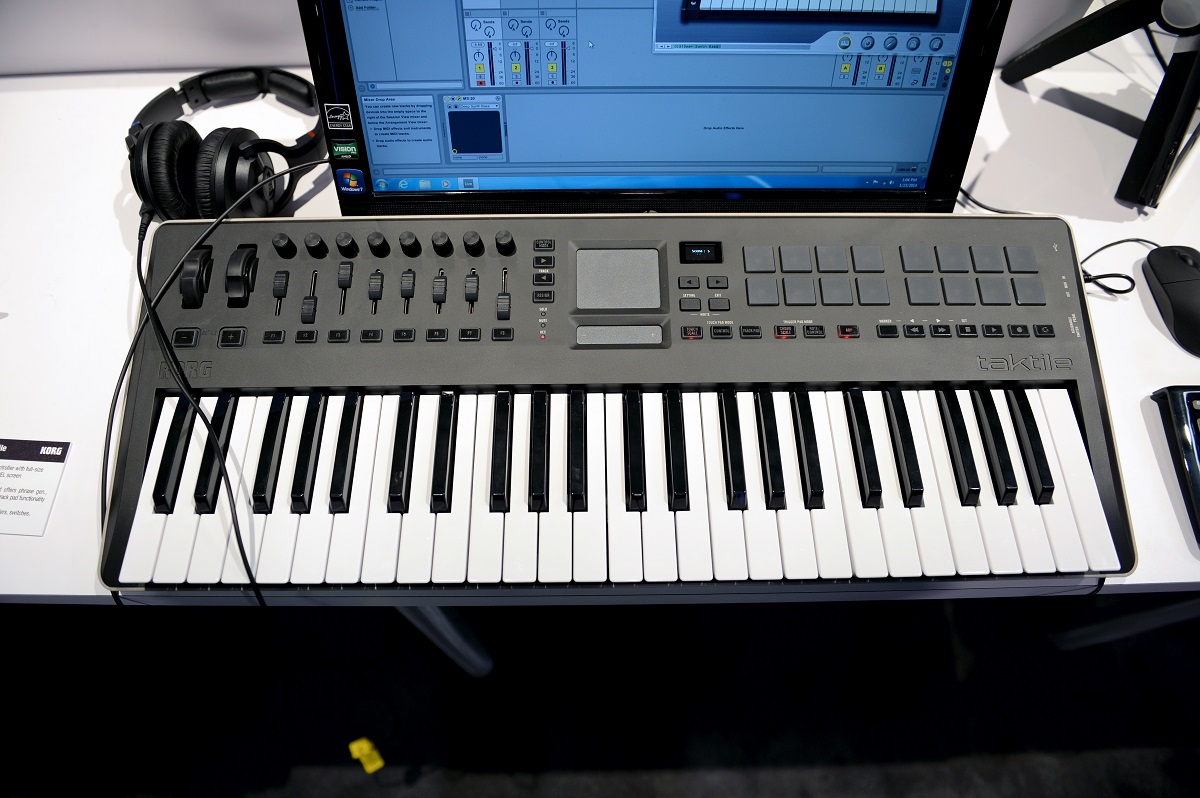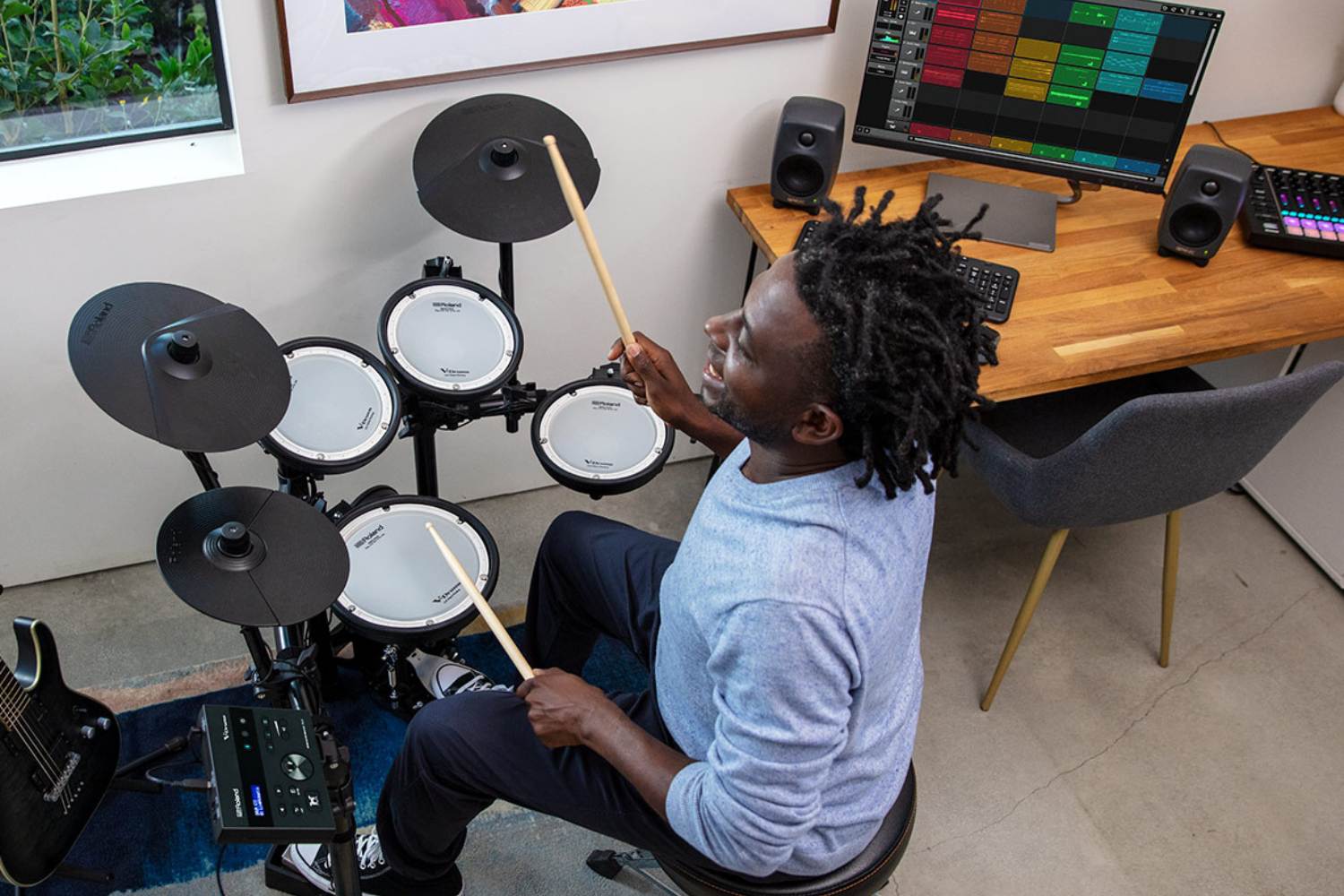Introduction
When it comes to music production, virtual studio technology (VST) drum machines are essential tools for creating captivating beats and rhythms. These software-based instruments offer a wide range of sounds and features, allowing musicians and producers to craft unique and dynamic drum tracks. However, despite their versatility, VST drum machines may encounter recording issues when integrated with digital audio workstations (DAWs). Understanding the reasons behind these recording hiccups and learning how to troubleshoot them is crucial for seamless music production.
In this comprehensive guide, we will delve into the common challenges that arise when attempting to record VST drum machines in a DAW. By exploring the nuances of VST technology and the intricacies of DAW integration, we aim to equip musicians and producers with the knowledge and troubleshooting techniques necessary to overcome recording obstacles. Whether you are a seasoned music producer or a budding enthusiast, mastering the art of integrating VST drum machines into your DAW will undoubtedly elevate your music production capabilities.
Understanding VST Drum Machines
VST drum machines are software-based instruments that emulate the sounds and functionality of traditional hardware drum machines. These virtual instruments are designed to offer a wide array of drum and percussion sounds, ranging from classic analog drum tones to modern electronic beats. Additionally, VST drum machines often feature intuitive interfaces, comprehensive sound-shaping controls, and pattern sequencers, empowering users to create intricate and dynamic drum patterns with ease.
One of the key advantages of VST drum machines is their versatility. Unlike their hardware counterparts, VST drum machines can be easily integrated into digital audio workstations, allowing for seamless synchronization with other virtual instruments and audio effects. This integration enables users to harness the full potential of VST drum machines within the broader context of music production, facilitating the creation of cohesive and professional-sounding tracks.
Moreover, VST drum machines often provide extensive customization options, enabling users to tweak individual drum sounds, adjust parameters such as pitch and decay, and apply various effects to sculpt their desired sonic palette. This level of flexibility empowers musicians and producers to tailor their drum tracks to suit the specific aesthetic and style of their compositions, ultimately contributing to the overall cohesiveness and impact of the music.
Furthermore, many VST drum machines support MIDI functionality, allowing users to trigger and sequence drum sounds using MIDI controllers or piano roll interfaces within their DAW. This seamless MIDI integration enhances the expressive capabilities of VST drum machines, enabling users to craft nuanced and emotive drum performances that resonate with the overall musical arrangement.
By understanding the fundamental characteristics and capabilities of VST drum machines, musicians and producers can leverage these powerful tools to elevate their music production endeavors, infusing their compositions with captivating and rhythmically engaging drum tracks.
Troubleshooting VST Drum Machine Recording Issues
While VST drum machines offer a plethora of creative possibilities, users may encounter recording issues when attempting to integrate these virtual instruments into their digital audio workstations (DAWs). Understanding the common challenges and employing effective troubleshooting strategies is essential for ensuring a seamless music production workflow. Let’s explore some of the prevalent issues that may arise and the corresponding troubleshooting techniques to address them.
One common issue that users may face is latency, which can manifest as a delay between triggering a drum sound and hearing the playback. This latency can disrupt the rhythmic precision of drum performances and hinder the overall recording experience. To mitigate latency issues, adjusting the audio buffer size within the DAW’s settings can often yield significant improvements. By reducing the buffer size, the DAW can process audio more swiftly, minimizing the latency and enhancing the responsiveness of the VST drum machine.
Another potential challenge is related to MIDI settings and routing. If the MIDI input and output configurations are not properly set up within the DAW, the VST drum machine may not receive MIDI signals or transmit audio output effectively. Verifying the MIDI settings in both the DAW and the VST drum machine, ensuring that the appropriate channels and ports are selected, can help resolve these routing issues and establish seamless communication between the two components.
Furthermore, compatibility issues between the DAW and the VST drum machine software can impede recording functionality. It is essential to ensure that the VST drum machine is compatible with the specific version of the DAW being used. Updating the VST drum machine software to the latest version, which may include bug fixes and improved compatibility, can often resolve such issues and facilitate smooth integration with the DAW.
Additionally, inadequate system resources, such as CPU and memory limitations, can lead to performance issues when using VST drum machines within resource-intensive projects. Optimizing the system’s performance by closing unnecessary background applications, increasing the buffer size, and allocating sufficient CPU and memory resources to the DAW can alleviate performance-related recording issues.
By proactively addressing these common recording challenges and implementing targeted troubleshooting techniques, users can harness the full potential of VST drum machines within their DAW environments, unlocking a world of creative possibilities and seamless music production experiences.
Checking DAW and VST Drum Machine Compatibility
Ensuring compatibility between a digital audio workstation (DAW) and a virtual studio technology (VST) drum machine is paramount for seamless integration and optimal performance. Compatibility issues can impede the recording and playback functionality of the VST drum machine within the DAW environment, leading to frustrating roadblocks in the music production process. Let’s explore the critical considerations for assessing and addressing compatibility between DAWs and VST drum machines.
First and foremost, it is essential to verify the compatibility of the VST drum machine with the specific version of the DAW being used. DAW developers often release updates and new versions, each with its own set of technical specifications and requirements. Checking the official documentation or support resources for both the DAW and the VST drum machine can provide valuable insights into their compatibility status. Additionally, online forums and user communities may offer firsthand experiences and compatibility insights from fellow musicians and producers.
When assessing compatibility, it is crucial to consider the operating system requirements of both the DAW and the VST drum machine. Certain software versions may be optimized for specific operating systems, such as Windows, macOS, or Linux. Ensuring that the DAW and VST drum machine are compatible with the operating system running on the user’s computer is fundamental for a harmonious and stable integration.
Moreover, version compatibility between the DAW and the VST drum machine is a key factor to examine. Newer versions of DAW software may introduce changes to their plugin architectures, audio processing engines, or system requirements, which can impact the compatibility with older VST drum machine plugins. Conversely, outdated versions of the VST drum machine may not fully support the features and functionalities of the latest DAW releases. Verifying that the versions of both the DAW and the VST drum machine align with each other’s compatibility specifications is essential for a cohesive and reliable integration.
Furthermore, considering the plugin format compatibility is crucial. VST drum machines may be available in different plugin formats, such as VST, AU, or AAX, each tailored for specific DAW environments. Ensuring that the VST drum machine plugin format is compatible with the user’s DAW is essential for successful installation and seamless operation within the DAW’s plugin framework.
By meticulously evaluating and addressing compatibility considerations between DAWs and VST drum machines, musicians and producers can lay a solid foundation for a harmonious and productive music production environment, enabling them to leverage the full potential of these powerful tools in their creative endeavors.
Adjusting Audio and MIDI Settings
Optimizing audio and MIDI settings is crucial for ensuring seamless integration and efficient operation of virtual studio technology (VST) drum machines within digital audio workstations (DAWs). By fine-tuning these settings, musicians and producers can enhance the performance, responsiveness, and overall user experience when working with VST drum machines. Let’s delve into the key considerations for adjusting audio and MIDI settings to maximize the potential of these versatile virtual instruments.
One fundamental aspect to address is the audio driver configuration within the DAW. Selecting an appropriate audio driver, such as ASIO, DirectSound, or Core Audio, can significantly impact the latency, audio quality, and overall performance of the VST drum machine. Configuring the audio driver settings to align with the user’s audio interface and system specifications is essential for achieving low-latency, high-fidelity audio playback and recording.
Furthermore, adjusting the audio buffer size within the DAW’s settings can directly influence the latency and real-time responsiveness of the VST drum machine. By reducing the buffer size, users can minimize the delay between triggering drum sounds and hearing the playback, enhancing the precision and immediacy of drum performances. However, it is important to strike a balance, as excessively small buffer sizes may strain the system’s processing capabilities and lead to audio artifacts or performance issues.
When working with MIDI-enabled VST drum machines, configuring the MIDI input and output settings within the DAW is paramount. Verifying that the MIDI channels, ports, and routing options are correctly assigned to the VST drum machine ensures that MIDI signals are transmitted and received accurately, enabling seamless interaction between the user’s MIDI controllers or piano roll interfaces and the VST drum machine.
Additionally, users should explore the MIDI mapping and assignment capabilities offered by their DAW to streamline the integration of VST drum machines into their music production workflow. Customizing MIDI mappings for drum pads, knobs, and faders can enhance the tactile control and expressive capabilities when manipulating drum sounds and parameters within the VST drum machine, fostering a more intuitive and dynamic music production experience.
By conscientiously adjusting audio and MIDI settings to align with the technical specifications and performance requirements of VST drum machines, musicians and producers can optimize the functionality and creative potential of these virtual instruments within their DAW environments, empowering them to craft compelling and rhythmically engaging drum tracks with ease and precision.
Verifying VST Drum Machine Routing
Efficient routing of virtual studio technology (VST) drum machines within digital audio workstations (DAWs) is essential for ensuring seamless signal flow, audio playback, and recording functionality. By meticulously verifying the routing configurations, musicians and producers can establish a robust and coherent integration of VST drum machines into their music production workflow. Let’s explore the critical aspects of verifying VST drum machine routing and the implications for a streamlined and efficient production environment.
One pivotal consideration is the audio routing of the VST drum machine within the DAW. Ensuring that the audio outputs of the VST drum machine are correctly routed to the desired channels or tracks within the DAW’s mixer facilitates precise control over the individual drum sounds and enables comprehensive audio processing and mixing. Verifying the audio routing also allows users to apply audio effects, such as equalization, compression, and reverb, to the drum sounds, enhancing the sonic character and impact of the overall mix.
Moreover, when working with multi-output VST drum machines, confirming the routing of individual drum sounds to discrete audio channels in the DAW is crucial for nuanced mixing and processing. This granular routing capability empowers users to apply unique effects and adjustments to each drum sound independently, fostering a more dynamic and polished sonic landscape within their music productions.
For MIDI-enabled VST drum machines, verifying the MIDI routing and input configurations within the DAW is equally vital. Ensuring that the MIDI signals from the user’s input devices or piano roll sequences are correctly routed to the VST drum machine allows for precise triggering and sequencing of drum sounds, facilitating expressive and rhythmic control over the virtual instrument. Additionally, confirming the MIDI output routing from the VST drum machine to other MIDI-enabled instruments or devices within the DAW environment can expand the creative possibilities and interconnectivity of the music production setup.
Furthermore, users should explore the routing options for MIDI control data, such as modulation, pitch bend, and aftertouch, to leverage the expressive capabilities of VST drum machines fully. Customizing and verifying the MIDI control routing empowers musicians and producers to imbue their drum performances with nuanced articulations and dynamic variations, enhancing the emotive impact and musicality of the drum tracks.
By diligently verifying the routing of VST drum machines within their DAW environments, musicians and producers can establish a solid foundation for efficient signal flow, creative flexibility, and precise control over their drum tracks, ultimately fostering a cohesive and productive music production experience.
Updating VST Drum Machine and DAW Software
Regularly updating virtual studio technology (VST) drum machine software and digital audio workstation (DAW) applications is crucial for maintaining compatibility, optimizing performance, and accessing the latest features and improvements. By staying abreast of software updates and version releases, musicians and producers can ensure a seamless and productive music production environment. Let’s explore the significance of updating VST drum machine and DAW software, along with the potential benefits and considerations associated with this essential maintenance practice.
One of the primary advantages of updating VST drum machine software is the incorporation of bug fixes and stability enhancements. Software updates often address known issues, software conflicts, and performance bottlenecks, leading to a more reliable and robust operation of the VST drum machine within the DAW environment. By applying these updates, users can mitigate potential recording and playback issues, ensuring a smoother and more predictable music production workflow.
Furthermore, software updates frequently introduce new features, sound libraries, and performance optimizations to VST drum machines, expanding the creative capabilities and sonic palette available to musicians and producers. Accessing the latest sound banks, drum kits, and audio processing tools through software updates empowers users to infuse their compositions with fresh and inspiring sounds, enhancing the overall quality and artistic depth of their music productions.
Similarly, updating the DAW software is essential for embracing advancements in audio processing, plugin compatibility, and workflow enhancements. New DAW versions often integrate improved plugin architectures, audio routing options, and performance optimizations, offering users a more efficient and intuitive platform for integrating VST drum machines and crafting compelling drum tracks. By updating the DAW software, users can capitalize on these advancements, streamlining their music production processes and elevating the overall quality of their creative output.
Moreover, software updates frequently address security vulnerabilities and software compatibility issues, safeguarding the integrity of the music production environment and mitigating potential risks associated with outdated software versions. Ensuring that both the VST drum machine software and the DAW are running the latest, secure versions is crucial for protecting the user’s system and data, fostering a safe and reliable music production ecosystem.
While updating VST drum machine and DAW software offers numerous benefits, it is essential to exercise caution and perform thorough compatibility checks before applying updates. Verifying the compatibility of updated software versions with the user’s operating system, hardware configuration, and existing project files is crucial for preventing potential conflicts or data loss. Additionally, creating backups of important project files and settings before initiating software updates can provide a safety net in the event of unforeseen complications.
By proactively updating VST drum machine and DAW software, musicians and producers can harness the latest advancements in music production technology, fortifying their creative capabilities, and ensuring a stable and innovative environment for crafting captivating and immersive musical compositions.
Conclusion
Mastering the integration of virtual studio technology (VST) drum machines into digital audio workstations (DAWs) is a pivotal endeavor for musicians and producers seeking to craft compelling and rhythmically engaging music. Understanding the nuances of VST technology, troubleshooting recording issues, and optimizing audio and MIDI settings are essential steps in harnessing the full potential of these versatile virtual instruments. By diligently verifying compatibility, routing configurations, and staying abreast of software updates, users can establish a cohesive and productive music production environment, empowering them to create captivating drum tracks with precision and artistry.
As musicians and producers navigate the intricacies of VST drum machine recording, it is crucial to approach troubleshooting with patience and a methodical mindset. Addressing latency issues, MIDI routing challenges, and compatibility considerations requires a meticulous approach, coupled with a deep understanding of the technical aspects of both the VST drum machine and the DAW. By embracing these challenges as opportunities for growth and learning, users can refine their music production skills and cultivate a deeper appreciation for the intricacies of integrating technology into artistic expression.
Furthermore, the art of adjusting audio and MIDI settings, verifying routing configurations, and updating software reflects a commitment to excellence and a dedication to staying at the forefront of music production innovation. Embracing these practices as integral components of the music production workflow empowers musicians and producers to consistently elevate the quality and creativity of their musical endeavors, fostering a dynamic and inspiring environment for artistic exploration.
Ultimately, the seamless integration of VST drum machines into DAW environments is a testament to the ingenuity and adaptability of modern music production tools. By leveraging the capabilities of VST drum machines and honing the technical skills necessary to overcome recording challenges, musicians and producers can unlock a world of sonic possibilities, infusing their compositions with dynamic and expressive drum tracks that captivate listeners and elevate their creative vision.
As the landscape of music production continues to evolve, embracing the art and science of integrating VST drum machines into DAW environments is an ongoing journey—one that invites exploration, experimentation, and a relentless pursuit of sonic excellence. By embracing this journey with an open mind and a passion for innovation, musicians and producers can embark on a transformative creative odyssey, shaping the future of music with each rhythm, beat, and sonic tapestry they weave.







